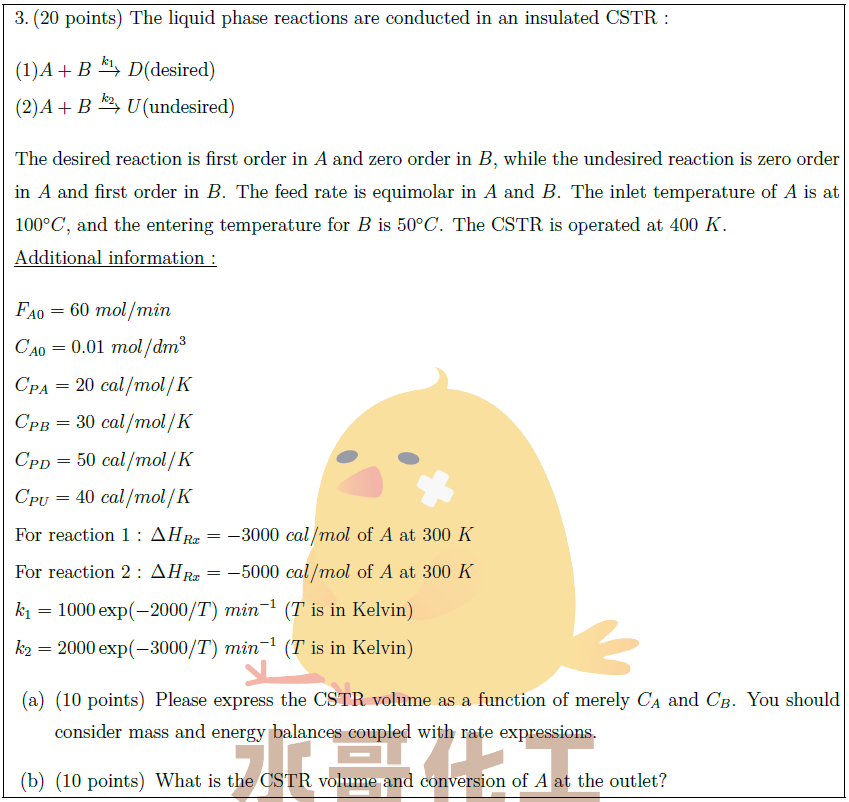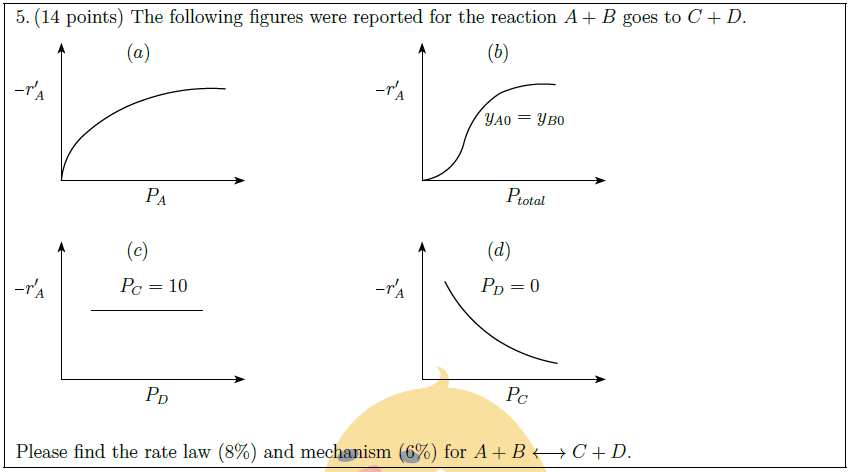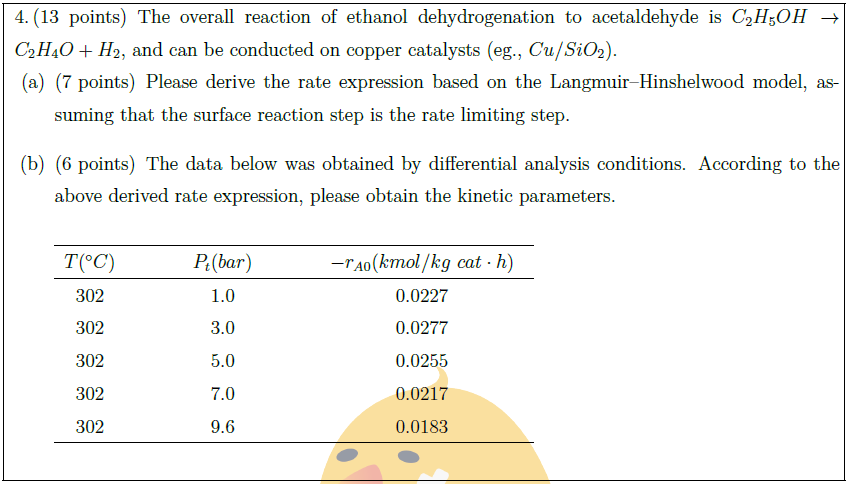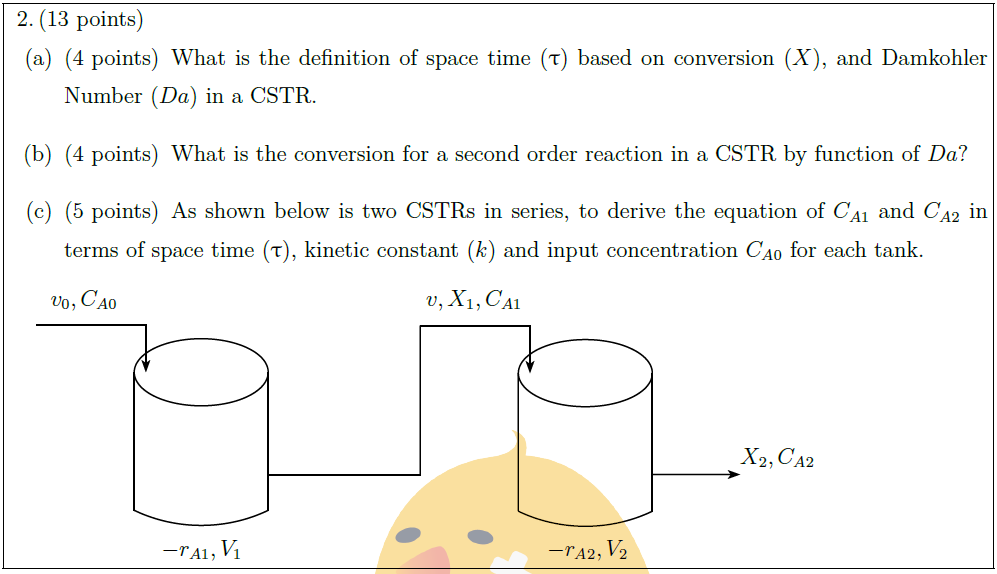Solution:
The liquid phase reactions are conducted in an insulated CSTR :
\begin{flalign*}
& (1) A + B \xrightarrow{k_1} D \mbox{(desired)} &\\
& (2) A + B \xrightarrow{k_2} U \mbox{(undesired)} &
\end{flalign*}
The desired reaction is first order in $A$ and zero order in $B$, while the undesired reaction is zero order in $A$ and first order in $B$. The feed rate is equimolar in $A$ and $B$. The inlet temperature of $A$ is at $100^\circ C$, and the entering temperature for $B$ is $50^\circ C$. The CSTR is operated at $400\ K$.\\
$\uline{\mbox{Additional information :}}$
\begin{flalign*}
& F_{A0} = 60\ mol/min &\\
& C_{A0} = 0.01\ mol/dm^3 &\\
& C_{PA} = 20\ cal/mol/K &\\
& C_{PB} = 30\ cal/mol/K &\\
& C_{PD} = 50\ cal/mol/K &\\
& C_{PU} = 40\ cal/mol/K &\\
& \mbox{For reaction 1 : }\Delta H_{Rx} = -3000\ cal/mol\ \mbox{of }A\ \mbox{at }300\ K &\\
& \mbox{For reaction 2 : }\Delta H_{Rx} = -5000\ cal/mol\ \mbox{of }A\ \mbox{at }300\ K &\\
& k_1 = 1000 \exp (-2000/T)\ min^{-1}\ (T \mbox{ is in Kelvin}) &\\
& k_2 = 2000 \exp (-3000/T)\ min^{-1}\ (T \mbox{ is in Kelvin}) &
\end{flalign*}
\begin{parts}
\part [10] Please express the CSTR volume as a function of merely $C_A$ and $C_B$. You should consider mass and energy balances coupled with rate expressions.
\part [10] What is the CSTR volume and conversion of $A$ at the outlet?
\end{parts}





